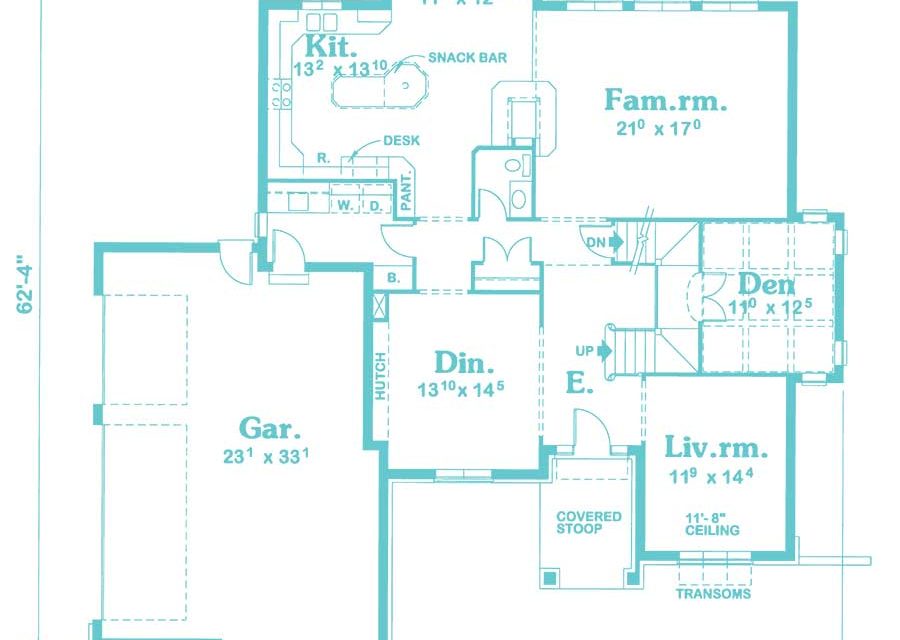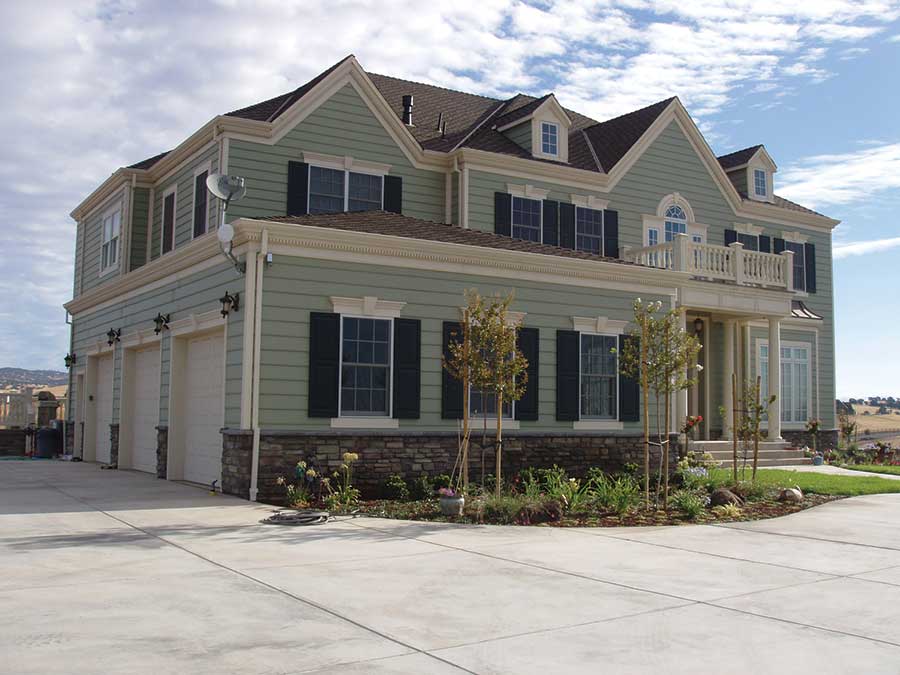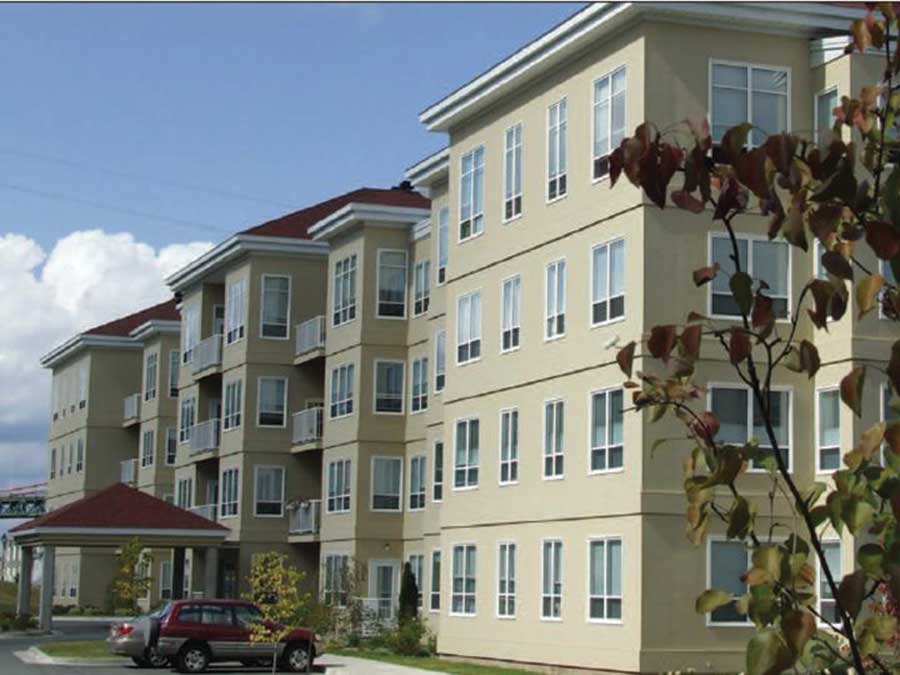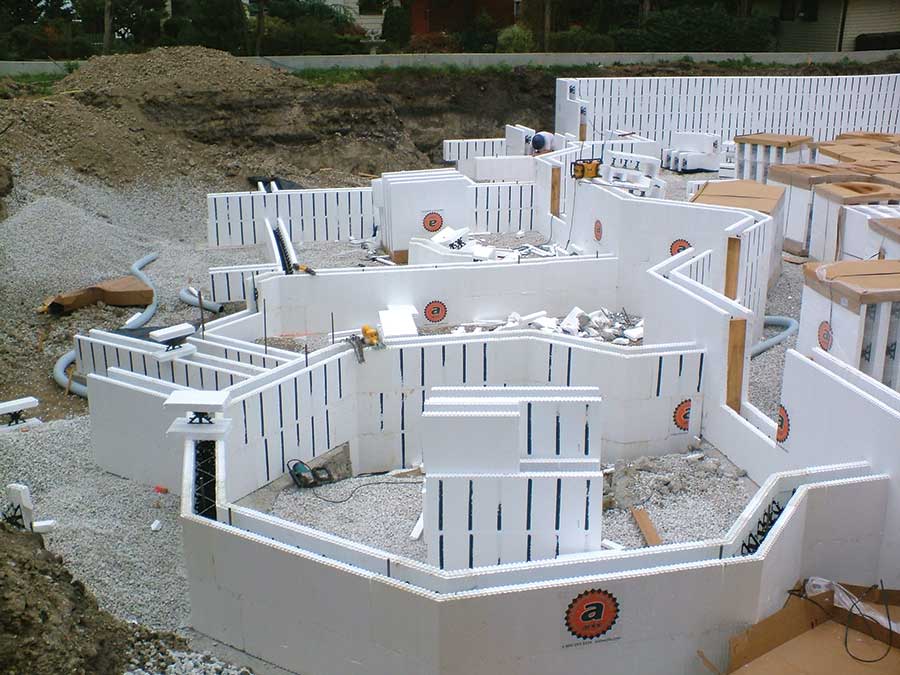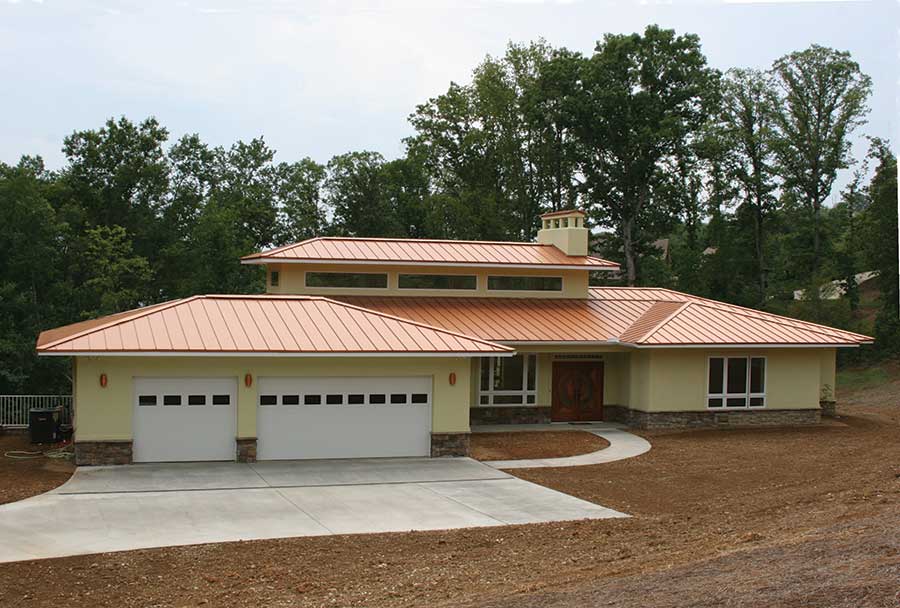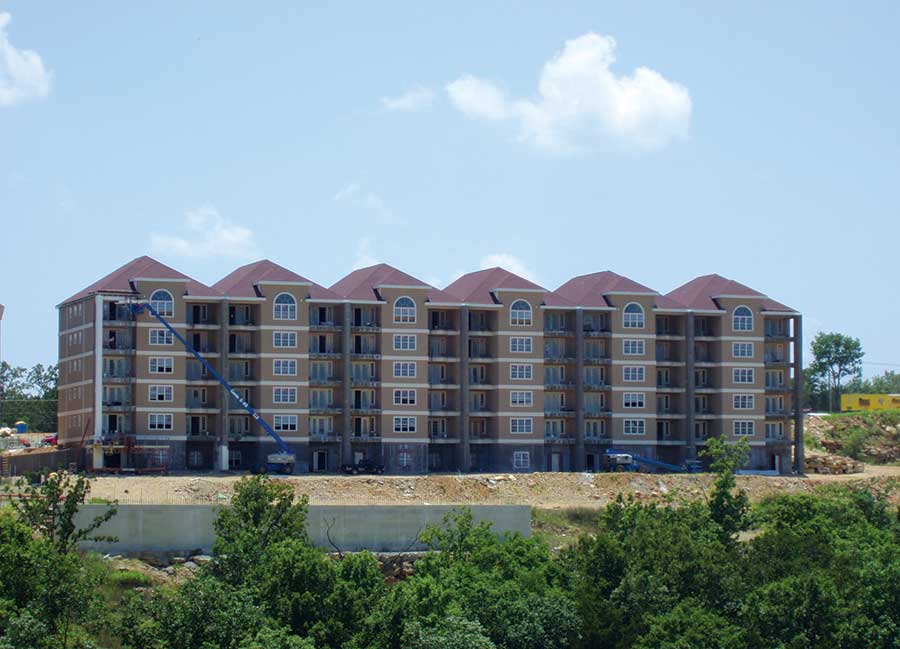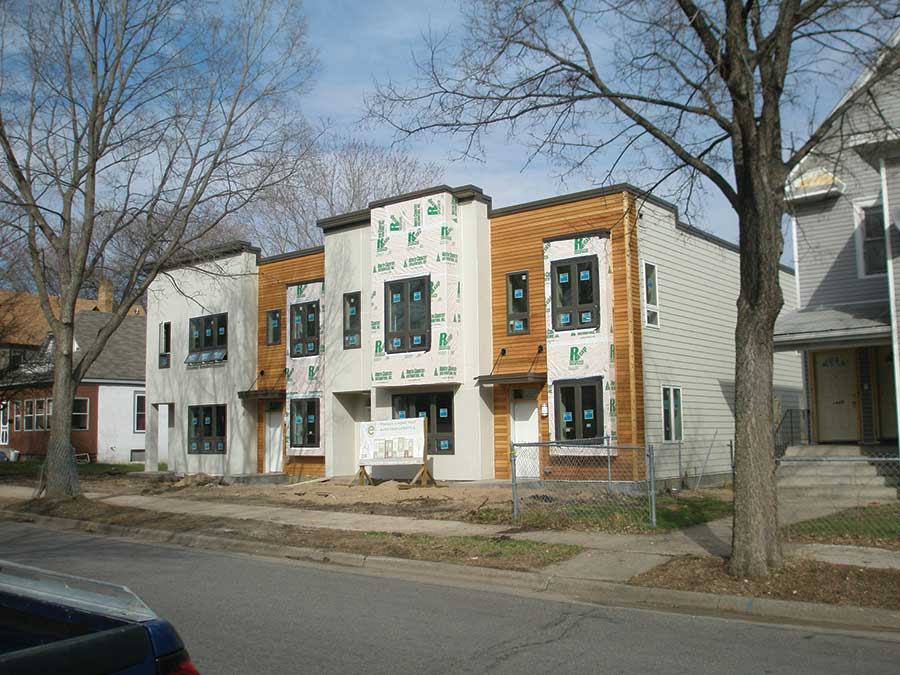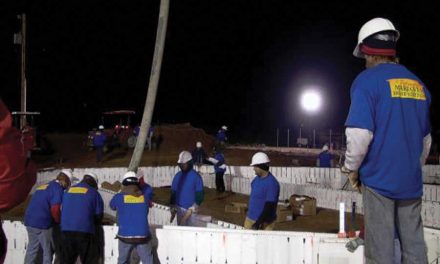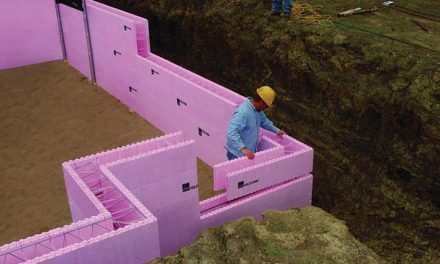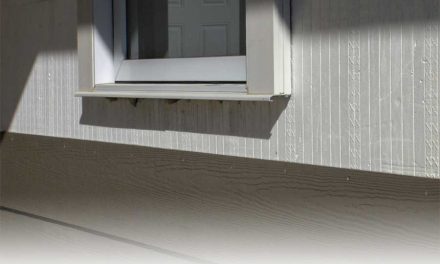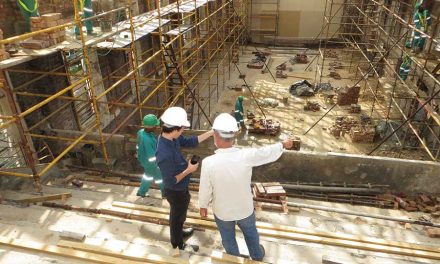An Introduction to Insulated Concrete Forms for Designers
Like many professionals in the design field, you’ve probably heard something about insulating concrete forms, or ICFs.
They are becoming extremely popular for green building, contributing up to 26 points toward LEED certification, and are one of the most cost-effective ways to build highly insulated exterior walls.
They are also used in a host of specialty applications, such as sound dampening demising walls (between movie theaters or condo units, for example), projects that need to withstand tremendous abuse (hurricane- and tornado-prone regions, wildfire areas, emergency response shelters, and military-grade structures) and for projects that favor using lightly-trained volunteer labor.
But what you may not know is how easy it is to design with ICFs. The purpose of this article is to familiarize architects and designers with a few of the basic principles involved when designing with ICFs.
What is an ICF?
An insulating concrete form is basically a hollow foam block made from expanded polystyrene (EPS), commonly referred to as Styrofoam. Nearly all ICFs are four feet long, and depending on the brand of ICF, either 12, 16, or 24 inches tall. These blocks can be stacked to form walls, which are then braced and filled with reinforced concrete. The result is a wall that is virtually impenetrable and highly insulative.
The foam is really just a stay-in-place forming system. It adds many beneficial qualities to the finished wall, but is always considered a non-structural element. That is, the wall can be designed just as it would be for any monolithically poured reinforced concrete wall. The steel schedules will be the same regardless of the forming system used.
ICFs come in a wide range of widths. Most manufacturers offer forms with concrete cores varying from 4” to 12” or more. The foam sidewalls vary from 2” to 2 ¾” per side, giving a tested R-Value of R-25. The thermal mass of the concrete and lack of air infiltration increase actual field performance considerably.
Designing For ICFs
This article will address the subject of designing ICF structures from scratch. (For information on converting an existing plan to ICF construction, see the article by Paul Foresman on p. 44.)
Virtually any design or architectural style can be built with ICFs. In fact, most designs can be built more quickly and easily with ICFs than with other types of concrete construction. The cost is usually slightly more than wood frame construction, but almost always less than masonry or removable form construction.
Whether you’re designing a Craftsman-style bungalow, a Tuscan mansion, or a home with sleek modern lines, you’ll find that ICFs can easily accommodate your vision.
In fact, it’s often the case that difficult designs can be constructed more easily with insulating concrete forms than with any other method. For instance, pre-formed corners (both 90- and 45-degree) are installed just as easily as a straight block. Radius walls, which can be a hassle for stick-framers and block masons, are extremely easy to make with ICFs. And because of the strength of reinforced concrete, ICF homes can often incorporate larger windows than a similar stick-built home. This is especially true in earthquake-prone areas like California.
Building Footprint and Exterior Walls
With a little effort, the designer can do a lot to make their ICF plans easy to build. The key is to determine the exact brand of insulated concrete form the building will be built with.
The Residences at Mont Blanc, a pair of 5-story, 64-unit apartment buildings in Halifax, Nova Scotia, is a great example of a design that has been carefully optimized for ICF construction (see photograph below.) Each building has 82 corners and hundreds of window openings, but was built with very little extra effort.
“All of the corners and walls are laid out to the exact dimensions of the block,” explains Peter Polley, who oversaw the development. “Even though we had so many corners, there was no cutting the blocks and no waste. Window and door sizes were also selected to minimize waste.”
Micheal Napier Architecture, which designed the structure, also made sure ceiling heights and window rough openings matched the courses of ICFs to further eliminate waste. If the structure will not have many openings, it isn’t as critical, but The Residences has so many windows, fully one-third of the exterior is glass. (Most leading brands of ICFs offer half-height blocks or “height adjusters” for ceiling height flexibility.)
Bay windows can be constructed with ICFs, but it’s often easier to frame them from wood if the column between the windows is narrower than 12” or so.
On multi-story buildings, second story ICF walls should line up directly above those on the first floor because of the weight. Gable ends can be built from ICFs, but are usually framed. There are really no height restrictions. Infill walls have reached 11 stories. Freestanding, self-supporting ICF walls have topped 60 feet.
A Broad Range of Possibilities
Because ICF walls are so strong, it opens a new world of possibilities with floor design options.
Concrete floors, whether pre-cast or poured-in-place, integrate seamlessly with ICF walls. That means it’s easy to put a room under the garage, or build a two-story garage on a home with a walk-out basement.
Others have used the walls to support a concrete roof. This option is most common for hurricane/tornado protection, but others have utilized the space as a deck/entertainment area, and several have installed garden roofs. Especially in the commercial arena, garden roofs are becoming a major selling point.
Another option is to use steel joists to create large open areas inside the home or commercial structure that would be impossible to achieve with traditional construction. The Turner Residence profiled on p. 30, features a 30’ by 36’ clear span room. The Holy Cross Catholic Church in Porterville, Calif. has clear spans of 58 feet across the nave and transept, and the hip trusses over
the alter area span 82 feet. (See profile in the Aug. 2007 issue for more information.)
Interior walls
On must projects, only the exterior shell of the building is built with ICFs. Yet there is often good reason to construct at least some of the interior walls out of ICFs as well.
The Comfort Inn in Tifton, Ga. (see p. 20) used ICFs for nearly every wall in the building because it saved $250,000 in foundation costs. They are common in hotels and multi-family construction as demising walls (walls that separate units). Multi-use structures, such as the fire station on p. 16, use ICFs to isolate sleeping/living areas from other, louder areas of the building.
One wise homeowner requested an ICF wall around his master suite to acoustically separate it from the big playroom nearby that would be occupied with noisy grandchildren.
Other uses for ICFs inside residential structures are theater rooms, safe rooms, wine cellars, cold storage, and anywhere a load-bearing wall is required. The Mady Residence (p. 33) made extensive use of interior ICF walls simply because it was easier to build the complex design with ICFs than any other method.
Integrating Green Technologies
Many are attracted to ICFs because of the possibility for sustainable design, and most green technologies work extremely well with ICF walls. Highly-insulated roof systems, such as SIPs, are a good choice. The New Southern Home (p. 34) used expanding sprayable polyurethane insulation, which is another great choice for creating a high-insulation, low-air-infiltration roof.
Radiant hydronic in-floor heat is another popular technology. Because of the thermal mass of the walls, temperatures inside an ICF home will change very slowly. This makes in-floor heat a great option, and because the walls are so strong, slabs could be installed on multiple floors.
Other technologies that work well with ICFs include solar/photovoltaic systems, rainwater collection systems, low-VOC interior finishes, and air handling/filtration systems.
One other note: Because ICF structures are so energy-efficient, they typically require HVAC equipment half the size used in traditional construction. Exact formulas are available in ASHRAE Manual J. The widely touted efficiency of ICFs will not occur unless the HVAC system is properly sized.
Exterior Finishes
A glance at the projects featured in this issue is sufficient to learn that virtually any exterior finish can be applied to ICFs. Acrylic stucco, sometimes called TAFS or EIFS is perhaps the easiest. It is applied like any other EIFS system, except the foam is already in place when the wall is poured. Traditional stucco is almost as easy, and moisture issues are minimal with ICFs.
Brick, stone, cultured stone and siding of any kind is also applied seamlessly. Perhaps the most difficult finish is shingles, but James Krantz applied nearly 12,000 sq. ft. to his New Southern Home (p. 34) without problems.
Construction Schedules
ICFs offer several advantages in construction scheduling. Because foam is in place when the concrete is poured, construction workers can build with ICFs even through the harsh winters of the Upper Plain States and Prairie Provinces with few slowdowns. The constraint is usually the working conditions for the laborers, not the concrete. Heating and hoarding budgets are minimized. Both Fire Station #62 (p.16) and Dry Creek Professional Building (p.18) used less than half of their heating and hoarding budgets despite being built through a cold western winter.
Because an ICF wall assembly already includes insulation and furring strips, it eliminates the time and labor associated with those steps from the construction schedule as well.
And when other jobs fall behind due to wet conditions, muddy jobsites, and other problems, ICF construction typically doesn’t.
More Information
Obviously, this short article, written by a layman, isn’t detailed enough to answer every question that will come up when a designer deals with ICFs for the first time.
Luckily, however, those answers are available, and they’re often just a phone call or mouse click away.
For starters, the American Institute of Architects (AIA) offers an “Introduction to ICFs” course that counts toward continuing education credits. ICFs are distributed through a network of local dealerships, which often teach the course. These distributors are also a great resource for other information.
Insulating concrete forms have become so common in recent years that makers of everything from siding to stucco, roof joists to waterproofing membranes, now offer detailed wall sections and installation instructions relating to their product and ICFs.
For more specific information try contacting any major ICF manufacturer. They all maintain extensive collections of technical drawings and details, which are available to serious architects considering an ICF project. Many of these are posted on the web. Others can be obtained with a simple phone call. These companies also maintain a full-time technical staff with trained, certified engineers to aid designers in their efforts.
Simply put, the ICF industry recognizes that designers are a key part to its greater acceptance, and would be happy for the chance to convince you how easy it is to design with ICFs.

